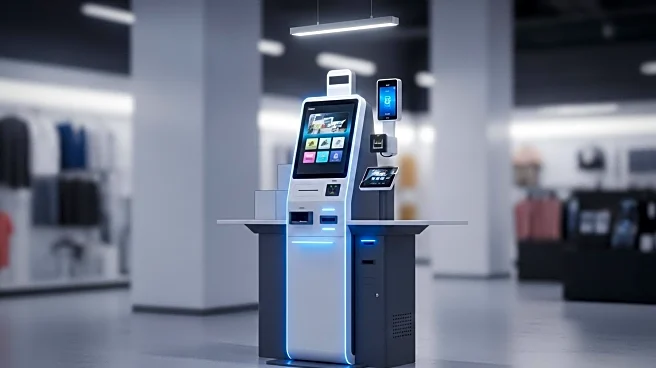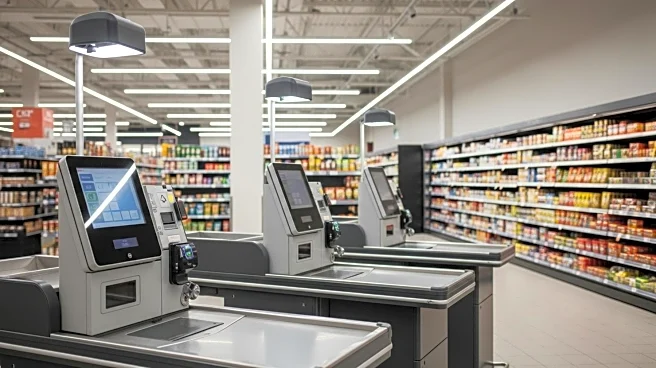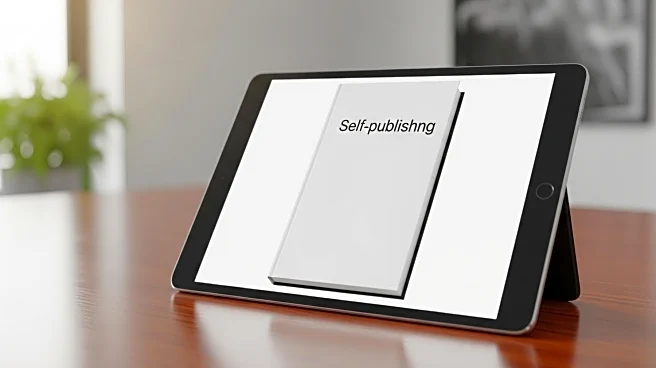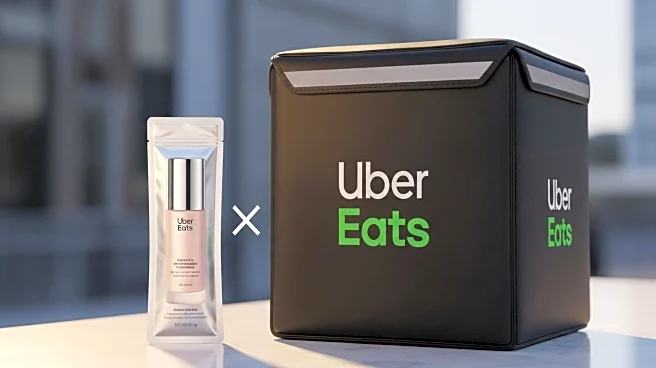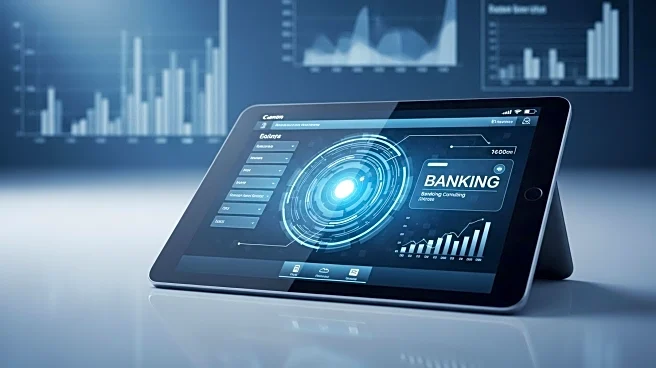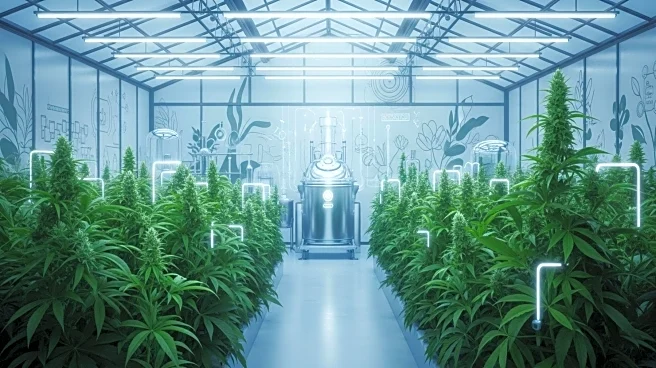What's Happening?
The global self-checkout system market is projected to grow significantly, reaching USD 14,307 million by 2032, with a compound annual growth rate (CAGR) of 14.5%. This growth is driven by retailers' demand for enhanced customer experience, reduced labor costs, and faster transaction processing. Supermarkets and grocery chains are leading the adoption due to their high-volume, repeat-purchase environments where speed and convenience are critical. North America dominates the market, benefiting from high consumer acceptance, early technological adoption, and substantial investment in retail automation. Self-checkout systems are increasingly integrated with advanced technologies such as barcode scanning, RFID, mobile payments, and AI-driven fraud detection to streamline the shopping process and improve operational efficiency.
Why It's Important?
The expansion of self-checkout systems is significant for the retail industry as it addresses the growing consumer demand for faster and more convenient shopping experiences. By reducing queue times and operational costs, retailers can enhance customer satisfaction and optimize their operations. The integration of AI and mobile payment technologies further expands the market's appeal, offering opportunities for technological innovation and cost optimization. As labor costs continue to rise, self-checkout systems provide a viable solution for retailers to maintain efficiency and competitiveness in the market.
What's Next?
The self-checkout system market is expected to continue its growth trajectory, with further integration of AI-enabled checkout, frictionless payments, and cloud-based systems. Emerging markets, particularly in Asia-Pacific and Latin America, present untapped potential as retailers focus on enhancing customer convenience and operational efficiency. Stakeholders, including retailers, technology providers, and investors, have significant opportunities to capitalize on this evolving market.
